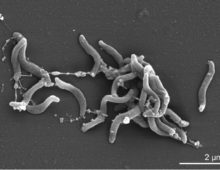Terephthalate-degrading consortia
Terepthalate is the byproduct of a common compound used extensively by the plastics industry. The volume of terephthalate wastewater generated is equivalent to the amount of wastewater generated by 20 million people. Syntrophic communities are composed of bacteria that break down organic matter and methanogens that remove the hydrogen released to ensure the degradation process… [Read More]
